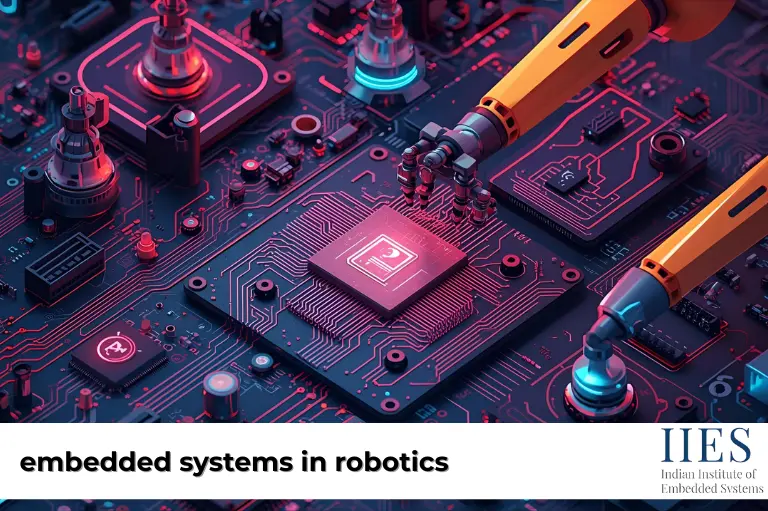
Embedded systems in robotics are the hidden brains behind robots, controlling their movements, sensing, and decision-making. They make robots smarter, more precise, and capable of performing complex tasks efficiently. These systems ensure that robots can operate autonomously without constant human guidance.
Robots rely on robotics and embedded systems to process data from sensors, make real-time decisions, and execute tasks accurately. This allows machines to work in dynamic environments like factories, hospitals, or even in our homes. By optimizing performance, embedded systems help robots achieve both speed and reliability.
Artificial Intelligence powers robots to learn, adapt, and operate autonomously, with embedded systems acting as the essential hardware backbone.Real time systems ensure decisions are processed instantly for efficiency.
Embedded systems are specialized computer systems designed to perform dedicated tasks within a larger device. Unlike general-purpose computers, these systems focus on efficiency, reliability, and real-time performance.
Key features of embedded systems include:
Embedded systems are widely used in medical devices, industrial automation, automotive electronics, and of course, robotics.
Role of embedded systems in robotics is critical controlling its actions and decisions. They manage movement, sensing, and processing of data efficiently. Without these systems, creating intelligent and autonomous robots would be nearly impossible.
Without robotics and embedded systems, autonomous and intelligent robots as we know them today would be impossible.
Embedded systems in robotics are not just about movement and sensing—they also enable automation of repetitive tasks. Robotic Process Automation (RPA) helps robots handle routine processes efficiently. By integrating RPA, robots can reduce human intervention and improve overall productivity.
Embedded systems enable real time systems to interact directly with hardware, making automation possible in industries.
Embedded systems online training teaches how embedded systems make robots smarter, faster, and more reliable. They allow precise control of movements, real-time responses, and energy-efficient operations. These advantages are crucial for industries where accuracy and uptime are essential.
Many practical robotics projects rely on applications of embedded systems in robotics to function smoothly. From drones to factory robots, these systems control sensors, motors, and navigation. Real-time processing ensures that robots can react instantly to their environment.
These projects highlight how essential embedded systems are in real-world robotics applications.
Industrial automation depends heavily on embedded systems for efficient operations. They manage robotic arms, smart sensors, and machinery control. Embedded systems help factories improve productivity, safety, and predictive maintenance.
The trend is moving toward fully autonomous industrial robots, driven by innovation in best embedded training institute in Bangalore.
The future of robotics will be driven by embedded systems combined with AI and IoT. Smarter robots will learn, adapt, and communicate with other devices. This evolution will make robots more autonomous, safe, and capable in various fields.
With embedded system courses in Bangalore and embedded systems online training, robots will become smarter, safer, and more capable of assisting humans in everyday life.
Embedded systems in robotics are the backbone of modern robotics, enabling precision, real-time operation, and intelligent decision-making. From drones to autonomous vehicles, they power machines to perform complex tasks efficiently. With advancements in AI, IoT, and industrial automation, embedded systems will continue to drive innovation, making robotics smarter, safer, and more accessible for everyone.
Embedded systems control robot movements, sensing, decision-making, and enable autonomous operations in robotics. They form the backbone of intelligent and precise robotic behavior.
Embedded systems provide real-time processing, precise control of actuators, and optimized task-specific operations, improving robot speed, accuracy, and efficiency.
The main components include microcontrollers, sensors, actuators, communication interfaces, and firmware—all working together to control robotic functions.
Yes, embedded systems are designed for real-time responses, allowing robots to react immediately to environmental changes and make accurate decisions.
They offer precise movement control, energy efficiency, high reliability, automation of repetitive tasks, and help reduce human errors in industrial operations.
By integrating AI and IoT, embedded systems make robots smarter, safer, and capable of autonomous decision-making across industries, including healthcare, transportation, and manufacturing.
Indian Institute of Embedded Systems – IIES